|
by Marcia Simon all photos by Marcia Simon ©2024 To experience Denmark's nature and culture outside Copenhagen's city limits, take a few days to meander around the country roads, castles, archipelago and bike paths on the island of Fyn (aka Funen in English.) Most tourists in Denmark don't make it past Copenhagen's city borders, and that's okay for a short trip because there are plenty of eye-opening adventures within the city. But, because Copenhagen's intriguing vibe puts it on the list of destinations threatened by overtourism*, getting out of town for a few days gives you a better overall perspective of the country's true landscape and culture. There are plenty of options for a day or weekend trip to get away from the peak-season city crowds. Fyn is one of those options, and less than two hours by train or car from Copenhagen. Fyn is the island in the middle of Denmark, between the two main land masses of Zealand (the region that includes capital city Copenhagen to the east) and Jutland (to the west where you'll find the cities of Aarhus, Aalborg and the country's west coast sandy beaches.) Denmark's well-connected system of trains and buses makes it quite easy to hop a ride from Copenhagen's Central Station to Odense, the anchor spot in the middle of Fyn (pronounced "foon" in Danish.) Odense, best known as the birthplace of fairytale author Hans Christian Andersen, is the largest city on the island and the third largest city in Denmark. Depending on your travel preferences, you might anchor in Odense with an ample variety of hotels and restaurants in the city or Old Town, and day trips and tours to see the highlights of Fyn. Or... continue by train or bus, or rent a car or a bicycle, to explore the island on a deeper level, which is what I did on a recent trip. We rented a car in Odense and headed south, taking backroads for a stop at Egeskov Slot (Slot means Castle in Danish.) Built as a village manor house in the 1400s, Egeskov was transformed into a highly fortified fortress, commissioned by local landowner Frands Brockenhuus. The work was completed in 1554, and today Egeskov is considered one of the best-preserved moated Renaissance castles in Northern Europe. Brockenhuus was among the King’s inner circle of trusted advisors and one of the "most cultured" men of his time. He climbed the ranks to become commander of the Danish army. He died in battle during the Seven-Year War with Sweden. Heading farther south, the two main ports with ferries to the outer islands at the southern tip of Fyn are Faaborg and Svendborg. We opted for Svendborg and stayed at the hotelaeroe.dk/en/Hotel Ærø. The location is ideal for a short walk to the ferry dock to visit the smaller island of Ærø, and to a fun outdoor dining area where you can enjoy a local craft beer or cocktail with a light bite while you watch the boats and slow island life at the water's edge. The island of Aero has two places within a 10-minute walk of the ferry dock where you can rent bikes for a full day. A "regular" seven-speed bike is 100 DKK (about USD $15) or 250 DKK (USD $36) for an e-bike. We rode at a leisurely pace along the beach and rolling meadows, stopping often to take photos, pop into a distillery and enjoy a casual lunch. It was a delightful day, ending with a relaxed dinner at a cute Italian restaurant near our hotel back in Svendborg. Heading back to Copenhagen, we stopped at three castles before leaving Fyn. One, Broholm Castle, is now a hotel and restaurant. Of the two other two castles we visited that day, one had been turned into an event venue for meetings, weddings and other catered events; the other was a private home. Driving toward the mainland, we crossed the Great Belt Bridge, the fourth longest suspension bridge in the world, that connects Fyn and Zealand.
Two and a half days didn't seem like enough time to explore Fyn beyond the surface. With more than 1200 km (746 miles) of bicycle trails, this seems to be a perfect place to pack light and let the day unravel. If island hopping is your thing, consider staying at a hotel on one of the islands in the archipelago. *Overtourism refers to a destination that becomes so popular that its infrastructure can't efficiently accommodate the influx of people during peak travel season. In other words, spontaneity becomes less possible – your first-choice hotels and restaurants may be full, you wait in line for the attractions you've heard about, and vendors can raise their prices because they know people will pay. Marcia Simon, APR, CTA, is a travel writer and an IATA-accredited travel advisor specializing in Scandinavia. Connect: facebook.com/friendlygrouptravel, Instagram www.instagram.com/friendlygrouptravel or [email protected].
0 Comments
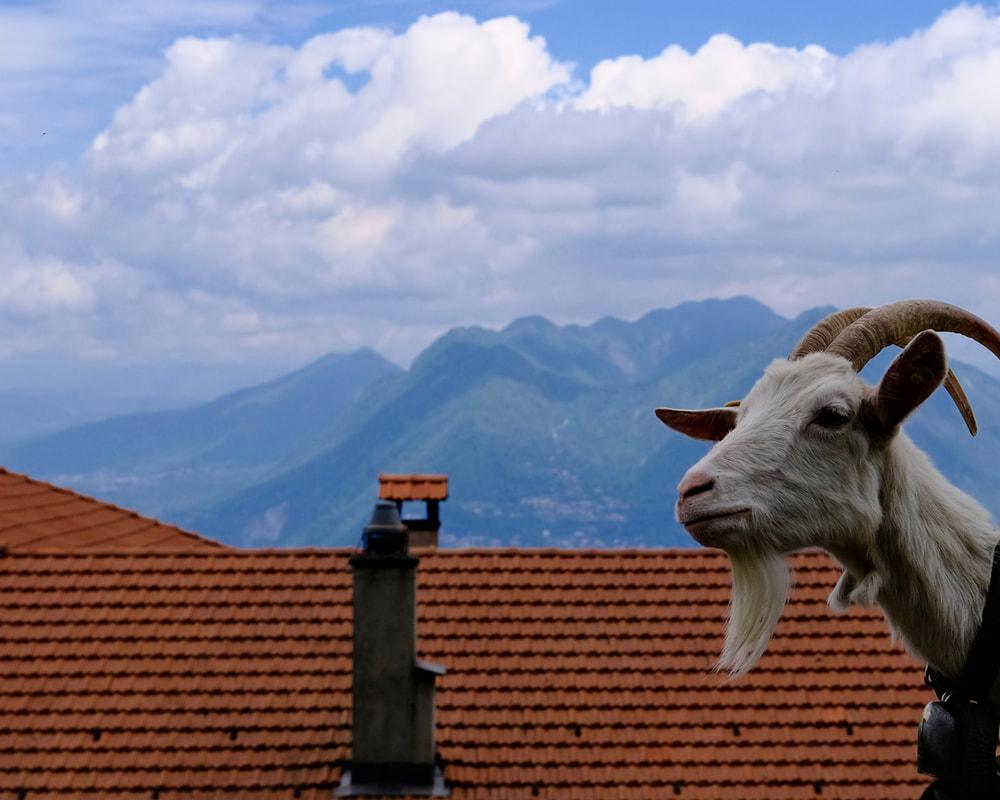 Scene from a day hike above Lake Maggiore with the Alps in the background Scene from a day hike above Lake Maggiore with the Alps in the background by Marcia Simon, CTA, APR Italy's lakes near the country's northern border are flanked by the Swiss Alps as a backdrop. This area is not usually part of a first-time trip to Italy, but visitors who enjoyed Rome, Florence or the Amalfi coast often to return to Italy to discover the magic of the lakes. I recently visited Lake Maggiore and Lake Como, which are the most popular for American tourists. Lake Garda, the largest of the lakes, is a popular destination for vacationing Europeans. Lake Maggiore The second-largest lake in Italy and the largest in southern Switzerland, Lake Maggiore (or Lago Maggiore in Italian) is nestled between the Italian regions of Piedmont (Piemonte) and Lombardy and the Swiss canton of Ticino. The main town is Stresa, overlooking the Borromean Islands, which are named for the family that acquired them back in the 17th century. The three islands include Isola Bella (Beautiful Island), known for its opulent palace and gardens, Isola Madre (Mother Island) known for its lush vegetation, and Isola dei Pescatori (Fishermen's Island) where tradition continues and fishing remains a way of life. The waterfront of Stresa is lined with hotels offering beautiful views and easy access to the bus line and ferry service that transport people from village to village up and down the lake. Hotel La Luna nel Porto was fine for our needs, not very expensive, and provided a junior suite with a comfortable king bed and huge balcony overlooking the lake. The kitchenette and living room area are ideal for longer apartment-style stays. Breakfast was included and quite generous in variety and size. Nearby, the Sempione Boutique Hotel also looked inviting with flower-boxed balconies and a rooftop terrace. We connected with Girosole, a company specializing in walking tours throughout Italy, to take us for a hike above the waterline. This allowed us to see a bit of the daily lifestyle with landscaped yards, goats, horses, and undisturbed villages that allow residents to escape the tourist traffic. We started in Levo and took in beautiful views of the Golfo Borromeo and surrounding Alps from above before circling back to Stresa. We stopped for a picnic lunch at the Giardino Botanico Alpinia (Alpine Botanical Garden), with spectacular views of the lake from above and then a stroll through more than 1,000 species of flowers, shrubs and herbs that grow in the Alps. Lake Como The largest town on Lake Como is called Como and is located at the bottom tip of the lake. It's the closest of this lake's towns to Milan, which is how most people first arrive. Como is big and feels urban, with plenty of great hotels and shops selling silk scarves and ties made in the local mills For a quieter scene, head to one of the smaller villages north of Como. The upscale town of Bellagio sits at the tip of a peninsula separating the east and west sides of the lake. Bellagio has all the charm you'd expect from this area, with lakefront hotels, shops, restaurants and ferry stops. We stayed at the Hotel Florence, which is reasonably priced and ideally located near restaurants, wine bars and shops. A ferry station is directly across the road and the balcony views of the lake are stunning from sunrise and through the day and night. Other small villages that offering comfortable accommodations are Tremezzo, Varenna and Menaggio. Luxury lakefront villas with private pools are idyllic for larger families and small groups. Our Girosole hiking guide, took us across the lake by ferry from Bellagio to Cadenabbia for a walk through the village of Tremezzo. The highlight of the day was walking up toward the church of San Martino, with an elevation of 475 m (1560 feet) above the village of Griante. The view of the lake was simply spectacular. Taking the ferry back across the lake we explored the town of Varenna. This is a fine place to stay if you like small villages and quiet evenings. From Varenna it's a 20-minute walk to the Fiumelatte, or River of Milk, a waterfall whose waters pour down from its glacial heights in a white cascade. We meandered among aromatic herbs like rosemary that grows as a hedge, flowering thyme along pathways, and wild poppies on the hillsides. Lake Garda
Garda is the largest among Italy's cluster of lakes, and is often combined with visits to Venice and Verona as part of a longer itinerary, or sometimes a day trip from the train station in the resort town of Peschiera del Garda at the lake's southern tip. It's about an hour and a half to Venice, and just under two hours to Milan. The medieval town of Sirmione, on a peninsula jutting out from the lake's southern coast, is one of the most popular spots on the lake. Here, the Grotto di Catullo is an archeological site featuring the ruins of a Roman villa built between the end of the 1st century BC and the beginning of the 1st century AD. Heading north on the dreamy west coast of the lake you'll find Limone Sul Garda, a popular town known for its lemons and olive oil. At the top of the lake is Riva del Garda, where the winds attract windsurfers and sailors. Getting Here and Getting Around If flying into Milan, take the shuttle to Milano Centrale (central train station), and connect on a train to Lake Maggiore, Como or Lago. Remember that there are very few train stops along the lakefront. Once at the lake, the most efficient ways to get around are by bus or ferry. Driving is possible, but the traffic can be terrible and parking spaces may be difficult to find, so use public transportation when possible. Sustainability Many eco-conscious accommodations, including organic farms (agriturismos), B&Bs and glamping, are available. Book early for peak travel periods. Public transportation is preferred over self-driving because the mountains don't allow for many large roads, and the villages depend on preserving the historic features of the area for tourism. Lake Como has reportedly invested heavily in its electrical network, adding more E-V charging stations. Lake Maggiore and Lake Como have largely done away with single-use plastic, including straws (if you ask for one, it will likely be paper), forks and spoons ("take-away" at restaurants might include wooden utensils if any at all.) Lake life has a comfortable slower feel than the rush to "see it all" in one of Italy's big cities. You can catch the vibe in a couple of days, but this area is best experienced with ample time to relax and take in the natural beauty as well as the foods and wines of this region. Marcia Simon is a Connecticut-based travel writer and owner of Friendly Group Travel. Connect via Facebook or Instagram @friendlygrouptravel or send email to [email protected]. written and photographed by Marcia Simon, copyright 2023 Getting to Cinque Terre in Northwestern Italy is usually by train from Florence, Genoa or Milan. Once you get there, the best way to see not just the five main villages, but the stunningly beautiful vistas from a totally different perspective, is by walking. A hiking tour of the area generally takes you through the eight-mile trail in Cinque Terre National Park. It doesn't sound like a long hike, but with the villages at sea level and the trails perched above the colorful coastline, the ascending and descending paths, plus numerous stops for photos, lunch, gelato and shopping in the villages, this is best enjoyed as a multi-day experience. Hiking gives you an immersive experience that day trippers from cruise ships and tour buses simply don't get. While village restaurants serve up scrumptious meals with local seafood, lemons, olives and Cinque Terre wines, our hiking tour allowed us to walk through the farms, and taste in the vineyards. Cinque Terre is in the region known as Liguria or the Italian Riviera. This Mediterranean coastline straddles the south of France and Tuscany. The eastern coast of the Ligurian Sea includes Cinque Terre's rugged cliffs, turquoise coves and pastel-colored seaside villages. The "Five Lands" It's easy to shuttle between Monterosso, Vernazza, Corniglia, Manarola and Riomaggiore using the Cinque Terre Train Pass. A prepay ticket gives you unlimited transport between all five of these villages. 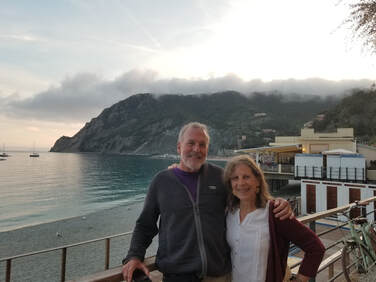 The day winds down in Monterosso. The day winds down in Monterosso. Monterosso, the largest and northernmost of the Cinque Terre, serves as a good home base. It's the only village with an actual public beach, which is lined with ample waterfront bars and gelato stands. Taking the train from Milan got us in to Monterosso mid-afternoon, so we had time to relax before beginning our official hiking itinerary, arranged with the help of Girosole Italy Walking Tours. Upon arrival we settled in at the Hotel Margherita, where the train station, beach, shops restaurants and hiking trail are all within easy walking distance. We quickly ventured into town for our first Aperol Spritz of the week. Cocktails and aperitivos are generally served with complimentary local olives and other salty snack to offset some alcohol and keep the thirst craving intact. Our hike began along the coast heading south. About three miles later we saw the small harbor of Vernazza, perhaps the most photographed of all the villages. As we continued the walk, the village kept getting closer, and the vista kept changing until we reached the village center. It was an adrenaline rush. Wanting more, we continued on to Corniglia. The Ligurian coastline is vulnerable to the effects of climate change. In recent years, dry periods followed by heavy rain have caused mudslides and temporary trail closures in Cinque Terre National Park while repair work is done. Such was the case on one stretch of trail during our trip between the two southernmost towns Manarola and Riomaggiore. An alternate, longer trail veers away from the coast and up a large hill. Instead, we wanted to see the ocean, so we hopped the train back to Monterosso for our end-of-day Aperol Spritz. 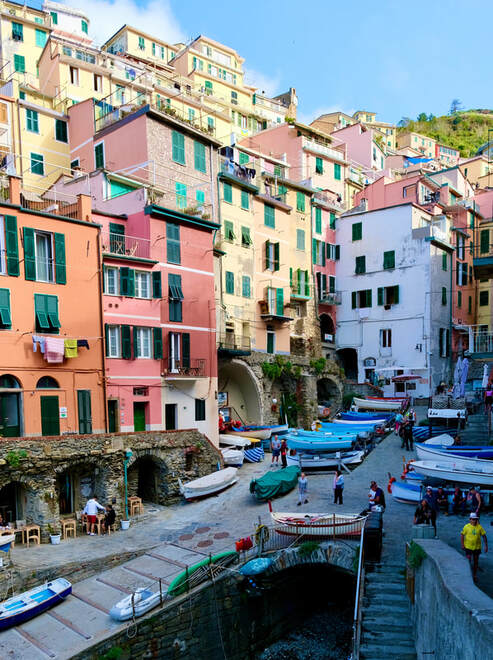 Riomaggiore – the southernmost village of Cinque Terre Riomaggiore – the southernmost village of Cinque Terre The next day started with a short train ride to Riomaggiore where we were fortunate to see the morning sun illuminating the multicolored hues of the buildings, fishing boats and kayaks in the marina. Standing in the middle of an iconic Cinque Terre photo scene, we did our best to capture our own images. After taking an excessive amount of photos and a leisurely stroll, we took the short train ride (literally 2 minutes) to Manarola and continued our walking journey. This was a highlight of the trip as, along the way while passing through the village border of Volastra, we encountered the Capellini Winery. It's right on the trail, overlooking terraced vineyards. (A few B&Bs are tucked into the countryside here for hikers who want to enjoy a sunset and dinner at Cantina Capellini without having to hike back to town afterward. The sea view was literally awesome as we gradually made our way down to the village of Corniglia and then the 377 steps to the train station. The trail is well marked and protected with rustic railings so it is never scary. 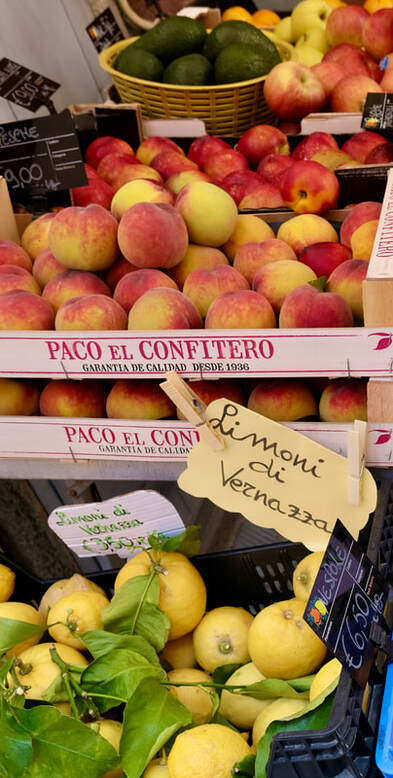 Aromatic fresh fruit in a street market Aromatic fresh fruit in a street market The Foods of Cinque Terre Brochures describe Cinque Terre as five fishing villages, but some of the locals say the history goes back to farming and creating terraces of level ground for crops and cattle even before the fishermen established their industry. Breakfast is generally always included with a hotel stay, and most often starts with coffee – espresso, cappuccino or Americano. You can expect breads, some type of meat protein, cheeses and a choice of yogurt, fruits and assorted pastries. Anchovies are the local fish, often eaten on salads or pizza, but not salted or cured. Because they are fresh, the flavor is more delicate, especially when lightly fried on a platter shared with local mussels and calamari. Liguria is the home of pesto. Apparently, pesto was "invented" in a small village outside of Genoa when the monks of a monastery dedicated to St. Basil gathered the aromatic ground cover growing on the hills. This "basil' was pounded by mortar and pestle with other local ingredients including pine nuts from trees that dotted the countryside, cheese from nearby dairy cows and olive oil. Today, Pesto Genovese is a popular pasta dish, particularly using trofie, which is a local twisted pasta cut into little rods. Focaccia and bruschetta are popular as street food or small plates, often with pesto and tomatoes, olive tapenade, little shrimp or freshly caught anchovies. We sampled the local flavors at Beach Bar Stella Marina on Monterosso's waterfront. Dinner includes local breads and antipasto of local hams and cheese, and of course there's no shortage of pizza or gelato. When to Go May has become an incredibly popular month for tourism in Italy. No longer will you beat the crowds if you head over mid-May. If you go in the summer, hiking trails may be overcrowded, and the sun can become intense. We went the first week of May, and it was perfect. Admittedly, luck played a part of that because after we left, the area was hit with three days of heavy rain. But - it's the rain that keeps the lush green mountains producing the crops and creating the jaw-dropping scenery. Sustainability As countries and regions across the globe find ways to address climate change, the challenges seem most real in ancient areas where infrastructure may be delicate or protected - and preserving history is a zoning priority over solar panels and other visible technological upgrades. Hotels, for the most part, seem to have adopted the practice of less frequent laundry service. Single-use plastic seems to have vanished. You may not get a straw unless you ask for it, and it will be a paper straw. If you order take-away from a restaurant, you will not get plastic utensils and you will not get Styrofoam. Paper and wood have replaced plastic throughout the area – at least from what I saw. Cinque Terre Hiking – 10 Tips for Planning Your Trip
The Cinque Terre Train Pass allows you to easily find a home base and begin each day in a different spot. With this in mind, here are some tips to help enjoy daily walks in the Cinque Terre:
Marcia Simon is a Connecticut-based travel writer and owner of Friendly Group Travel. Connect via Facebook or Instagram @friendlygrouptravel or send email to [email protected]. 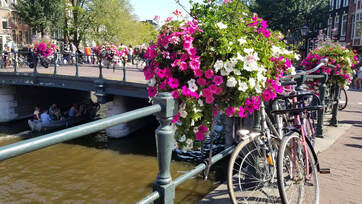 by Marcia Simon, CTA, APR Amsterdam, the capital city in the Netherlands, is known for its canals, bicycle culture and love for the arts. After all, this is home to Van Gogh, Vermeer and Rembrandt. And Heineken. Amsterdam’s tourist season begins in April when tulips generally reach their peak in Holland, which covers two provinces in the Netherlands. Summers are very busy, and August 2020 will be no exception with Sail Amsterdam, a once-every-five-year event that features tall ships from around the world accompanied by street food and entertainment, and also August’s annual 10-day Grachtenfestival for classical music, jazz, and music from other cultures. Off-season, on November 2, 2020 to be exact, the annual Amsterdam Museum Night gives you access to museums city-wide that stay open until 2 am. One wristband gets you in to all 50 participating museums. November also brings the Super-Sonic Jazz Festival to the city. For canal tours, the "best" time is April through October. Summers, of course, are warmest and also the most crowded. No matter what time of year you go, here are 10 Ways to Feel the Groove of Amsterdam, Holland:
Getting to Amsterdam is easy with flights arriving at the city’s Schipol Airport from around the world. A taxi from downtown Amsterdam will cost about 60 euros, while the train from the airport to Centraal Station runs every 10 minutes for 6 euros a ticket. The kiosks to purchase train tickets are located just after you pass the baggage carousels both inside the baggage claim area and outside once you clear customs. Trains and buses from Amsterdam take you throughout Europe. Marcia Simon, APR, CTA, is a PRSA-accredited public relations practitioner, and an IATA-accredited travel advisor. Connect through facebook.com/friendlygrouptravel, Instagram @friendgrouptravel or [email protected]. 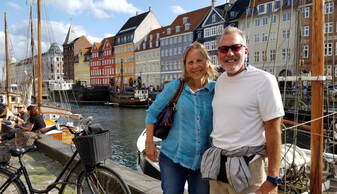 by Marcia Simon, APR, CTA Copenhagen is a fabulous walking city. Tip #1: Do NOT walk in the bike lanes. Unlike the United States, where cyclists are often forced to share roads with motor vehicles and pedestrians, bicycling in Denmark is a serious mode of transportation with designated lanes and traffic lights in urban areas. In Copenhagen, where more than half of all employees bike to work, wandering tourists walking into bike lanes can lead to injury, so pay attention to the bike lanes and stay clear. The train and bus systems make it very easy to get around Copenhagen without a car. Whatever your mode of transportation, here are 7 things to do in Copenhagen:
Leading the Way for Sustainability Denmark is a world leader in bringing sustainability to life, affirming the importance of the United Nations’ Sustainable Development Goals. Currently, 30 percent of all Denmark’s energy comes from renewable sources, including bioenergy, followed by wind, solar and geothermal energy, according to the Ministry of Foreign Affairs in Denmark. The country’s public and private sectors are both committed to achieving an energy system without fossil fuels by 2050. The enthusiastic Danish Society of Engineers, IDA, and is ahead of schedule on the project, and has a roadmap to implement the goal of a 100 percent renewable energy system by 2035. Playing On a Heap of Trash One of the steps towards Copenhagen’s goal of becoming the world’s first carbon neutral capital includes the opening of Amager Bakke, or CopenHill, planned as the new epicenter for urban mountain sport, offering year-round skiing and snowboarding on artificial snow. It includes the world’s tallest artificial climbing wall, running and hiking trails, and a café – all surrounded by a sprawling recreation area with water sports, soccer fields, and even a go-kart track. The clincher? CopenHill is built on top of the city’s new waste management and energy plant. Amager Bakke is considered the most efficient waste-burning and energy-generating plant in the world, and is expected to power and heat 160,000 households across Copenhagen. Getting Away From the City As beautiful as Copenhagen is with its waterways and happy vibe, seeing the outlying countryside is part of the Danish experience. Whether you travel by bicycle, car, train or bus, here are 5 day-trips that take you outside Copenhagen’s city center:
Marcia Simon, APR, CTA, is a PRSA-accredited public relations practitioner, and an IATA-accredited travel advisor at FriendlyGroupTravel.com. Connect through facebook.com/friendlygrouptravel, Instagram @friendlygrouptravel or [email protected] 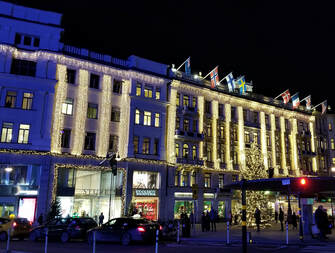 by Marcia Simon, CTA, APR The most popular time to visit Stockholm, Sweden’s capital and most populous city, is summer, with warm days, bustling outdoor cafes and extended hours of daylight to explore the city’s archipelago and canals by foot or by sea. After all, Stockholm is built on 14 beautiful islands connected by 57 bridges. But, as fate would have it, I had family business that called me over in mid-January. I didn’t mind; airfares and hotel rates are lower in winter, and having been to Stockholm about 30 times in my life, I was happy to approach this trip as a journey into winter life in the city. This time I opted not to stay in the tourist area of Gamla Stan (“Old Town” with cobblestone walking streets and preserved medieval architecture), near Djurgården (the island in the southern part of Östermalm that’s home to the famous Vasa Viking ship museum, Skansen outdoor living museum of traditional life, Gröna Lund amusement park and the Abba Museum), hip Södermalm with its artsy vibe and eclectic eateries, or near the ferry terminals that take passengers to the archipelago and numerous water tours of the city. Instead, we stayed in Norrmalm, a 20-minute walk north of the city’s Central Train station, passing by Sorgel Torg, the heart of this busy shopping and working district. Norrmalm is also a cultural hub, with ballet and opera at the Royal Swedish Opera, as well as art exhibits and modern dance at Kulturhuset Stadsteatern. Drottninggatan is a vehicle-prohibited shopping street filled with outdoor cafes and fun places to get a sense of current Swedish design and fashion. It begins close to the Royal Palace where you’ll see shops selling all the expected souvenirs, from t-shirts and Viking horn hats to Swedish crystal and H&M department store bargains. The farther north you walk, the more this becomes part of the local community. We also walked around Vasastan, a neighborhood near Stockholm’s prestigious KTH (Royal Institute of Technology), which was part of my reason for visiting over the winter. In winter, in Norrmalm, you feel less like a tourist and more immersed in daily culture of Swedish life. Here are my observations, some pertinent year-round and some most noticeable in winter:
If it had been summer, and the days were long and warm we’d be more apt to see families and lots of children out on the streets. With school in session and the setting sun closing in on daylight by mid-afternoon, it was a different vibe to see commuters – well-dressed men with their stylish hair and manbags, women bicycling in leggings and skirts, and shiny white lights in every direction. Most people would enjoy Stockholm more in spring, summer or fall. However, stretching a necessary family trip with a quick immersion dump into Stockholm’s winter culture gave us a fun new insight into the winter scene in one of Scandinavia’s most beloved cities. Marcia Simon, APR, CTA is principal of friendlygrouptravel.com and MSE Public Relations. She’s also a writer with special interest in travel, health and wellness. Connect at [email protected], facebook.com/friendlygrouptravel @marciasimon on Twitter or friendlygrouptravel on Instagram. 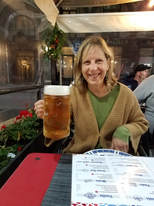 by Marcia Simon, CTA, APR A visit to Barcelona will likely include a stroll down Les Rambles (La Rambla), the main walking street lined with shops and restaurants filling tourists with paella, tapas, big mugs of local beer and sangria, and some really odd flavors of gelato. Other than to say, “been there, done that,” if you miss La Rambla, you can still have an excellent time in Barcelona. Explore the city and its outskirts. Plaça de Catalunya (Catalonia Square) is where you’ll find Tourist Information. This square is known as the “belly button” of Barcelona, the center of visitor activities, tours and excursions. It also serves as a boundary point for the different neighborhoods that reach out in different directions from this core. Under the plaza is the large mass transit metro complex. 10 Great Things to Do in Barcelona
|
AuthorMarcia Simon, CTA, APR, has been exploring new places since she was 17 years old and traveled around Europe on a Eurailpass with her best friend. Decades later, she still considers travel the best investment of time and money she's ever made for herself and her family. Categories
All
|
|
SIGN UP NOW FOR OUR NEWSLETTER WITH TRAVEL TIPS, IDEAS AND SPECIAL OFFERS
|












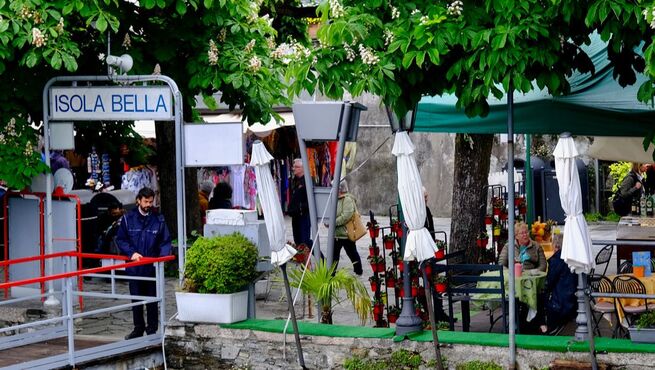
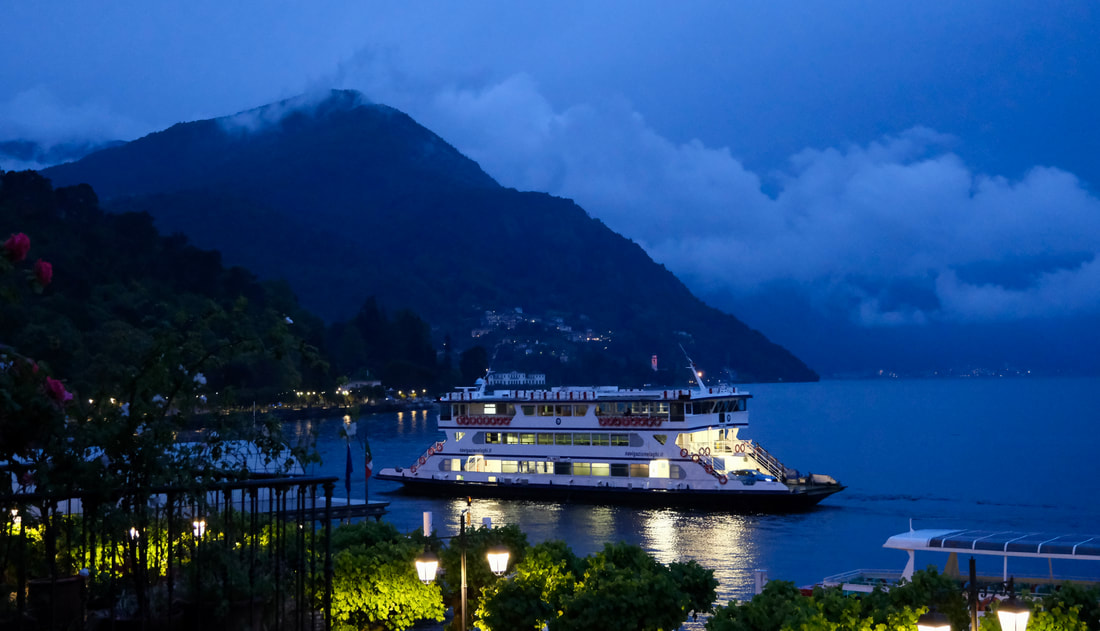
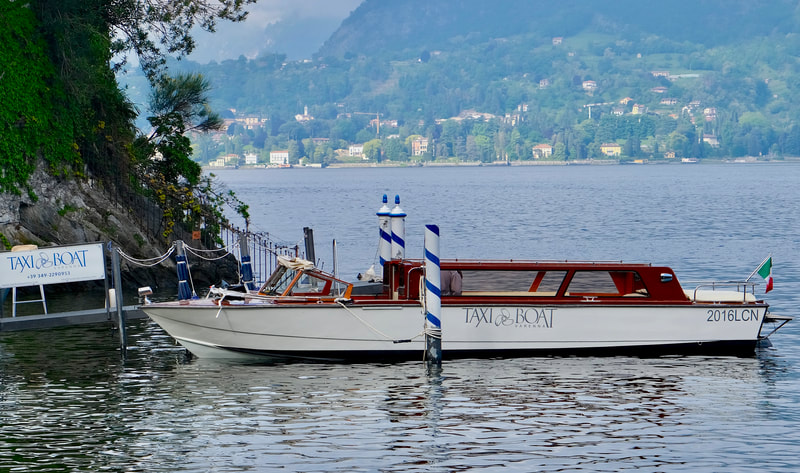
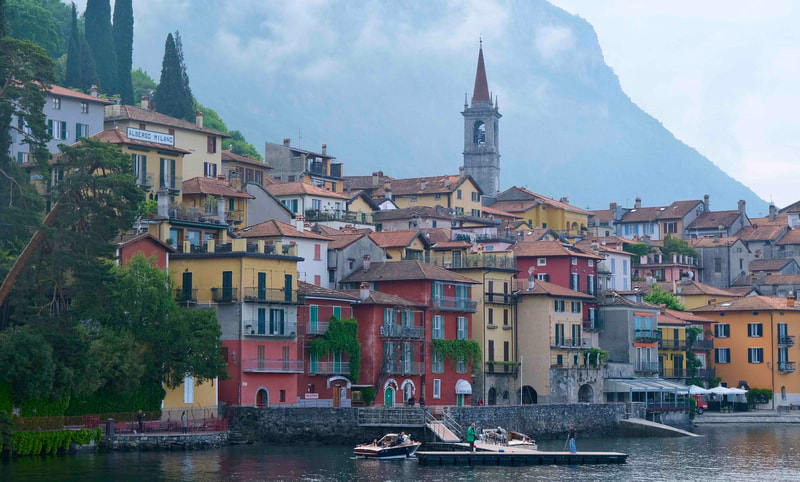
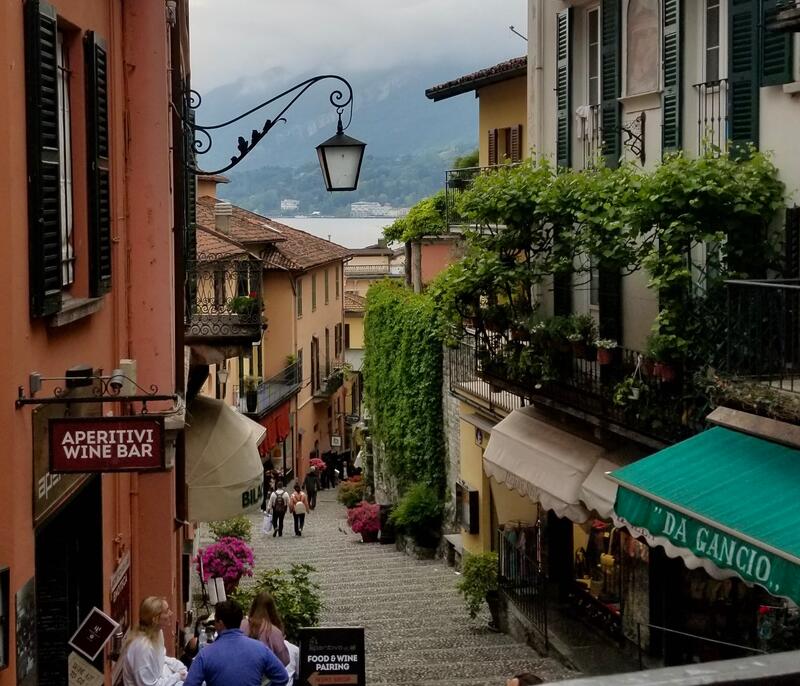

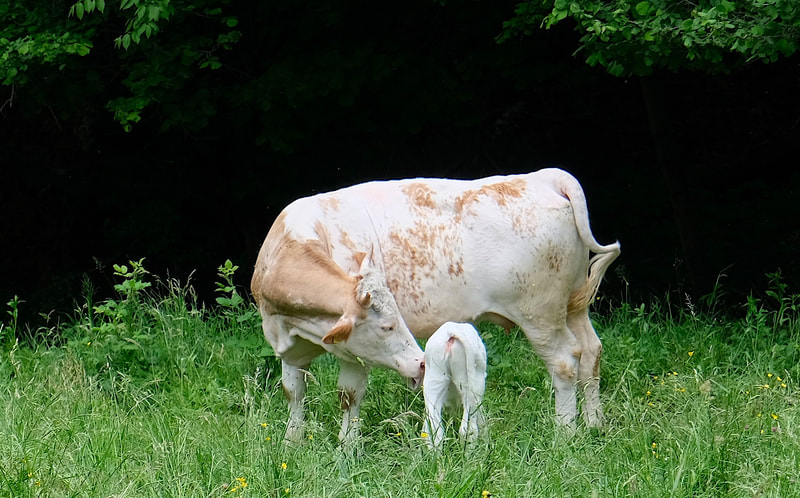
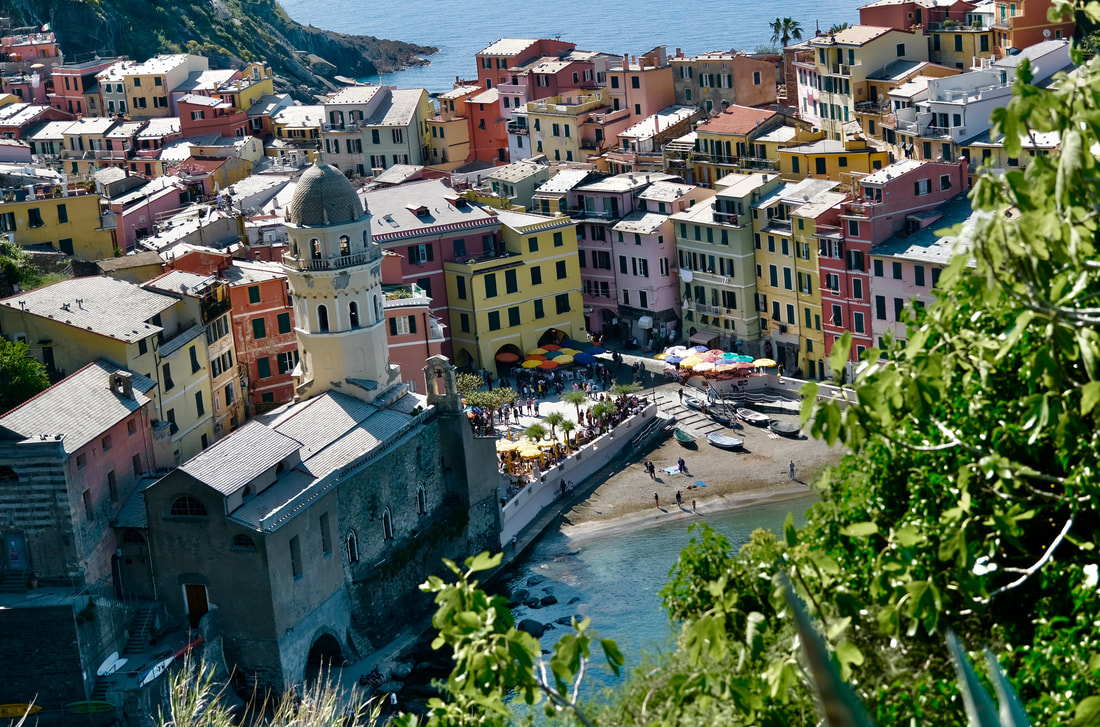
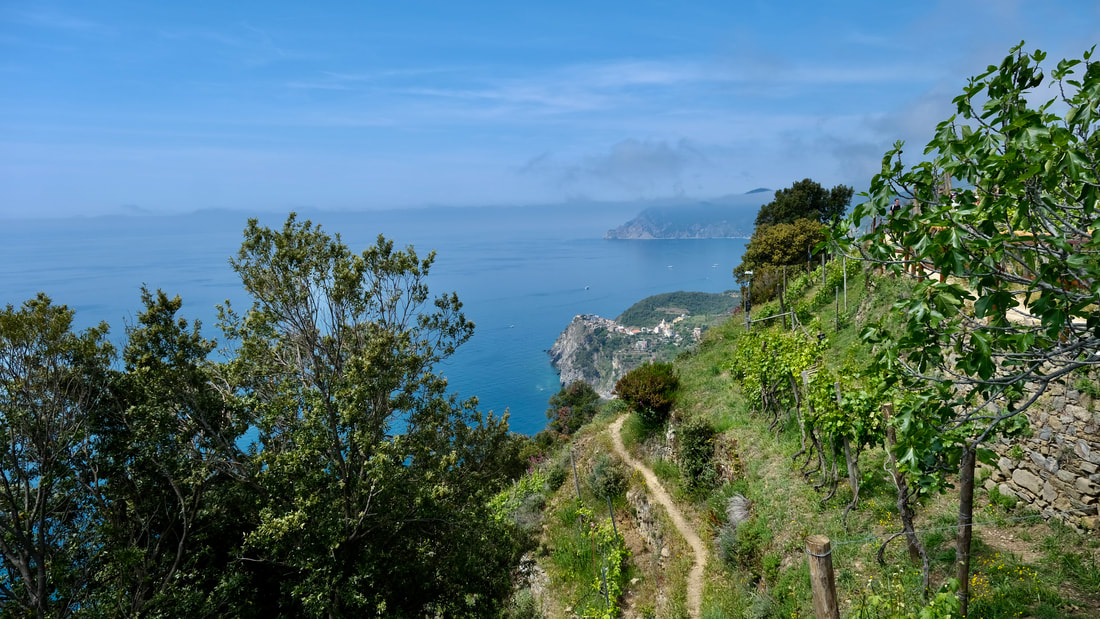
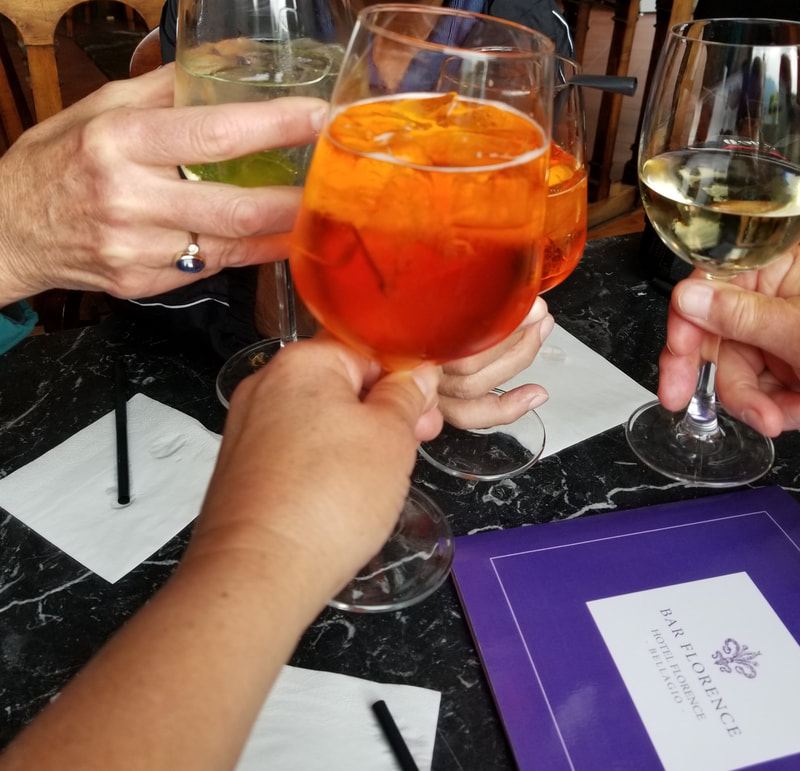
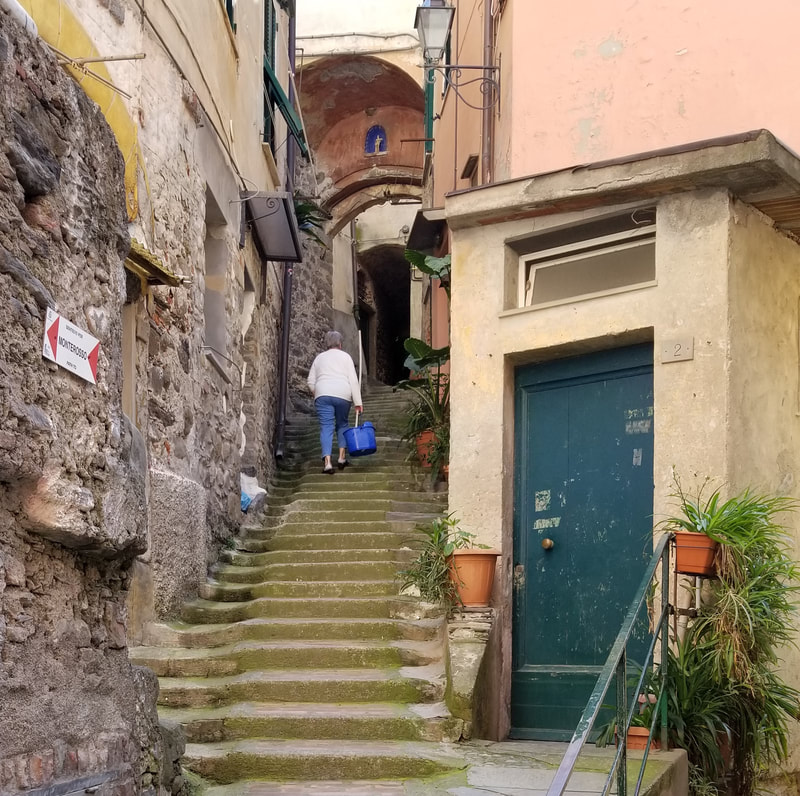
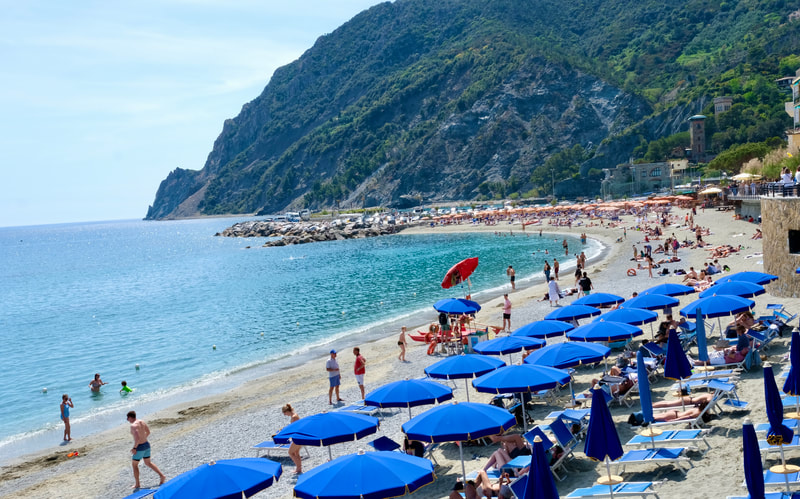
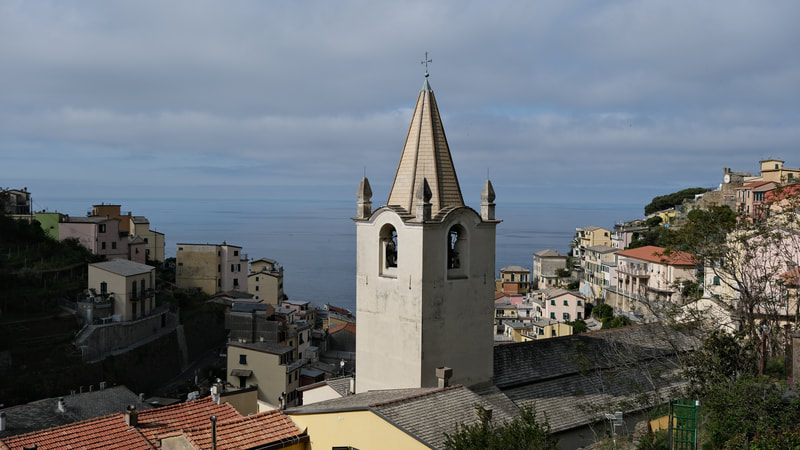
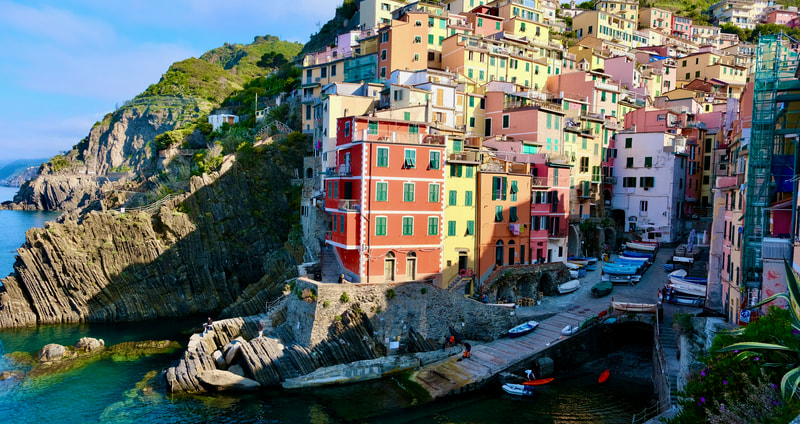
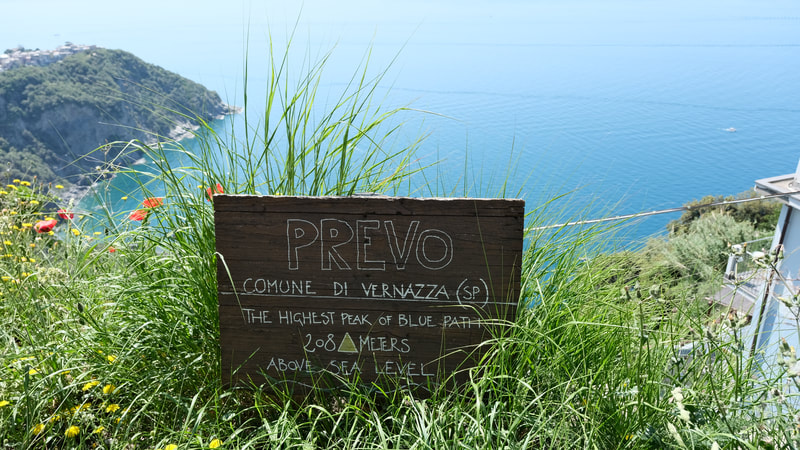
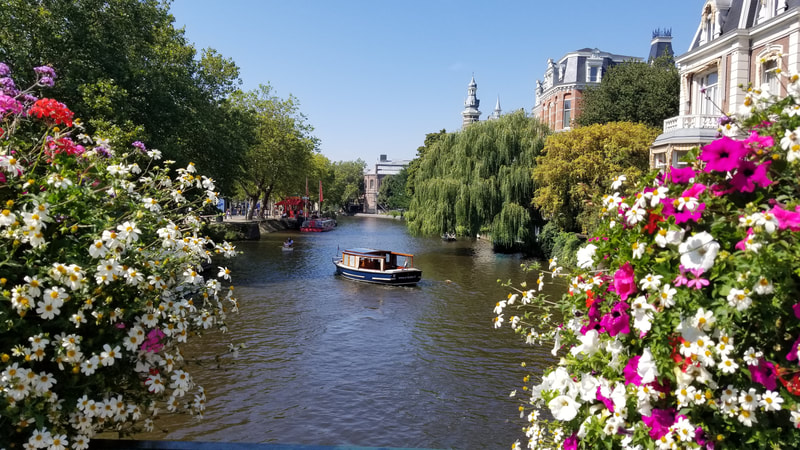
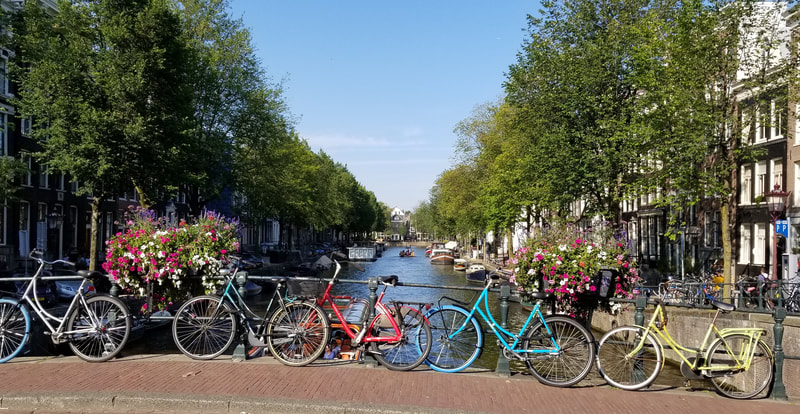
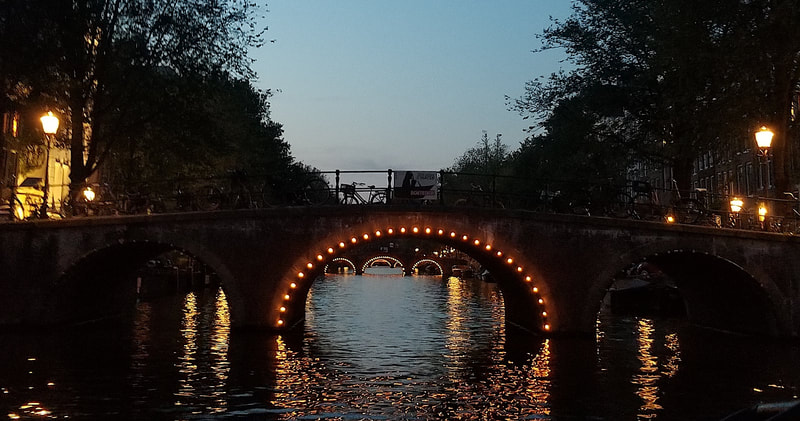
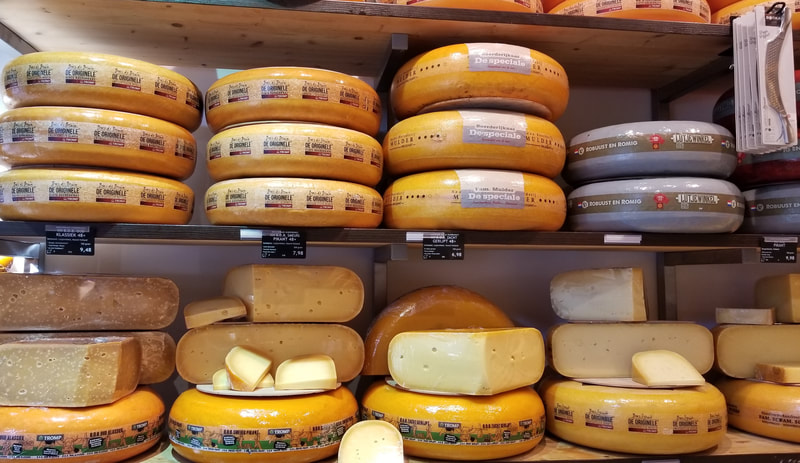
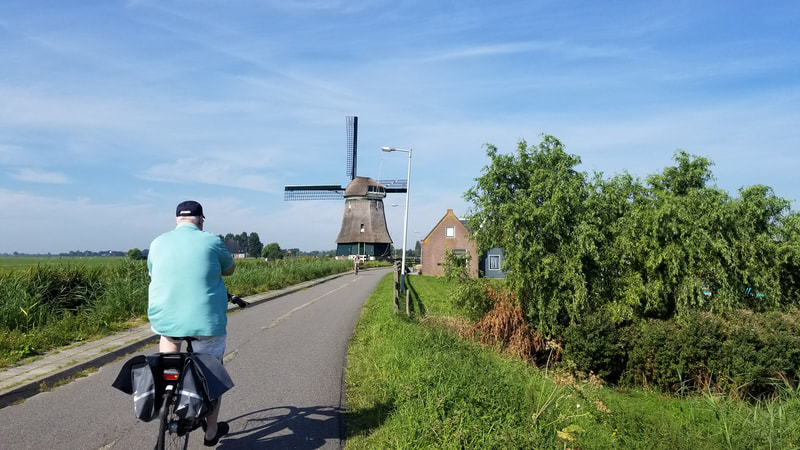
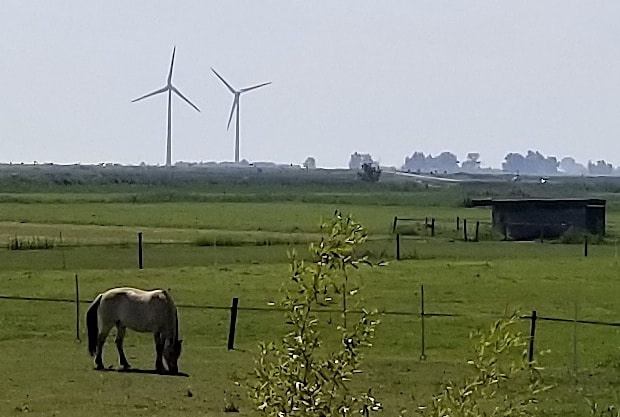

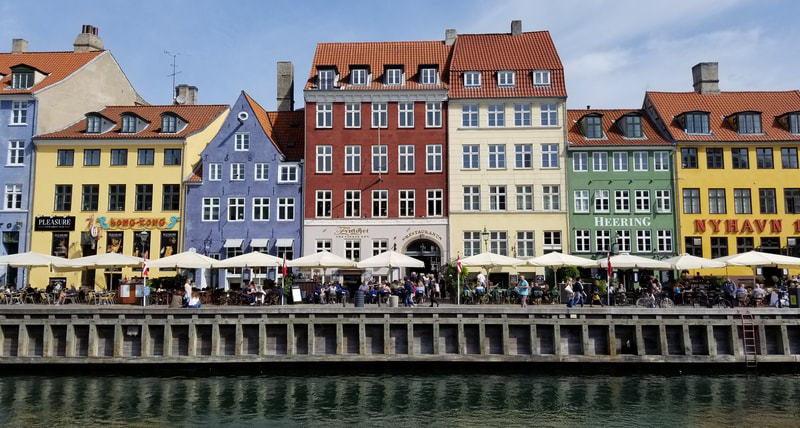
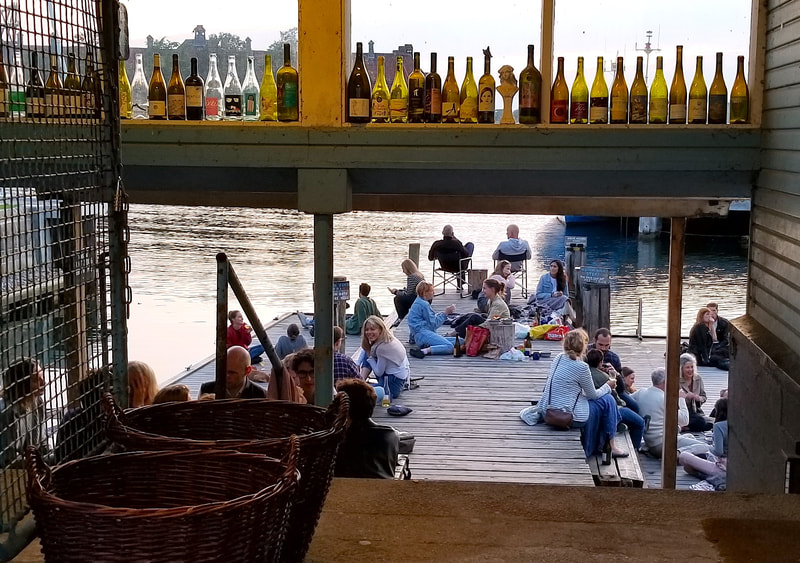
 RSS Feed
RSS Feed





